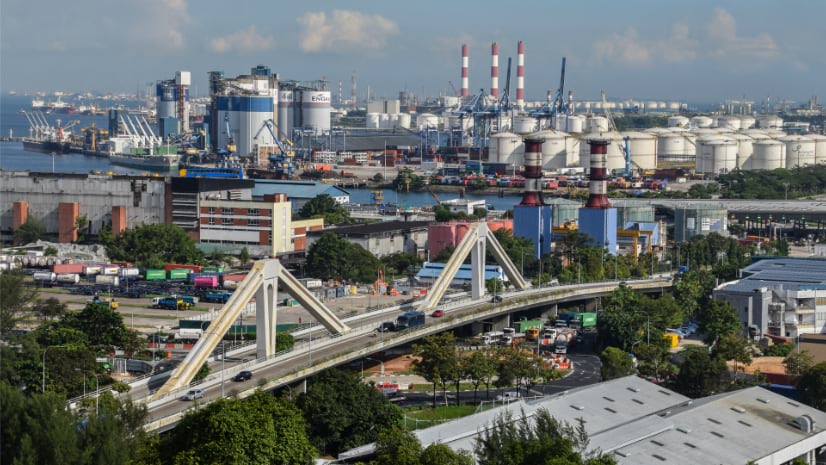

You need to take stock of what’s happening to your people, your assets, your cargo operations, so that you’re able to better respond effectively should anything go wrong.
October 22, 2024

For the gleaming city of Singapore, Jurong Port is the bustling hub for cargo that fuels the city-state’s vibrant growth. Jurong Port is a multipurpose port, handling general, bulk and containerized cargo. From construction materials and heavy machinery to livestock and essential raw materials, the port is a lifeline in handling shipments into the economic powerhouse.
Handling bulk cargo, however, presents unique challenges compared to more straightforward container shipments. Unlike the latter, where autonomous machines handle most of the loading and unloading, bulk cargo requires crews and a hands-on approach. Each shipment can bring its own set of challenges—be it a load of industrial pipes, steel plates, machinery, or steel reinforcement bars for construction—making every delivery a manual, complex puzzle to solve.
This complexity led Jurong Port’s leadership to realize they needed greater visibility of what was happening on the ground. They required a way to see operations in real time and to ensure smooth communication between teams. This need gave rise to JP Glass, a digital twin that uses geographic information system (GIS) technology that monitors port activity.
JP Glass provides a clear view of operations, facilitating communication about incoming cargo, the equipment needed, available personnel, and storage capacity in the yards and warehouses. It also monitors weather conditions, vessel berth depth, and port traffic. Moreover, JP Glass is displayed 24/7 at Jurong Port’s General Cargo Office, ensuring that staff can monitor the port’s operations at any point in time.
Seaports generally fall into one of two categories: landlord or operator. Traditionally, Jurong Port operated as a landlord port, providing basic services, while contracted companies managed the terminals. However, to better align with Singapore’s goal of optimizing the supply chain, Jurong Port transitioned into a port operator. This strategic shift has allowed the port to create value across the entire logistics ecosystem by ensuring seamless integration and efficiency in its operations.
This transformation spurred the drive for digitalization. Since 2017, Jurong Port has focused on developing terminal operating applications, which enable the harnessing of vast amounts of data now visualized in JP Glass.
The process of implementing JP Glass began with the team, led by Cynthia Mark Mohan, assistant vice president and head of digitalization at Jurong Port, understanding the existing data and identifying key priorities. “Typically, when you start on this journey, there’s a whole list of requirements that come through and it’s always a mess—’I want this. I want that. I want everything,’” she shared. “So, we sat down with management to determine our key priorities. It was business-driven from the start.”
Once priorities were set, the team assessed the necessary data to make effective cargo-handling decisions. Some of the data needed to be collected, which influenced application design. Other data needed to be integrated, sometimes directly from the source, and other times, through connections to other systems.
One integral data source is the Maritime Port Authority of Singapore (MPA), which maintains a data hub that serves information to all shipping stakeholders. MPA maintains the country’s National Maritime Spatial Data Infrastructure that focuses on the environmental impacts of shipping activity and changing weather conditions. MPA keeps watch over shipping operators as it guides regulations to encourage more resilient practices.
“In the Singapore maritime space, we are trying to be more green,” Cynthia said. “Knowing where things are helps us be more efficient and reduce our carbon footprint.”
Due to the transition from landlord to operator, Jurong Port still has some leased spaces that need to be managed. “Our digital twin solution shows us the status of leased spaces, all our leasing arrangements, and helps us manage capacity,” Cynthia said. “We need to know the occupancy ratio, similar to how a hotel tracks room occupancy.”
The senior leadership team’s vision for developing JP Glass is to provide all staff with a comprehensive overview of the port, featuring live updates on berth status, vessel activity, cargo handling, storage, delivery, and security. This initiative supports Jurong Port in resource planning, allowing it to react faster and more efficiently.

You need to take stock of what’s happening to your people, your assets, your cargo operations, so that you’re able to better respond effectively should anything go wrong.
To monitor port berth use, JP Glass displays and records simple details about whether a ship is present. In the future, JP Glass plans to expand into 3D for more sophisticated analysis—such as how cargo is stacked in the warehouse or how many cubic meters of aggregate are in a pile.
The addition of 3D will help Jurong Port understand which practices may need to change. For instance, how cargo is stored indoors and outdoors, or how to deal with cargo within a vessel. “Every vessel is a Pandora’s box, because you can’t see inside it,” Cynthia said. “Getting a cross section within a vessel to understand how cargo is stored is a very challenging use case that could improve cargo operations and help us better understand the state of health of our workers.”
JP Glass is already delivering faster turnaround times at port terminals because everyone has a shared awareness of current work.
“JP Glass has created visibility for our operations team to take necessary actions to address operational challenges or downtime faced when vessel is alongside. Over time, we do envisage to achieve higher operational safety and productivity, thereby delivering better service for our port users,” said Desmond Ong, chief digital officer at Jurong Port. “This is part of our broader digital transformation journey to make our port not just more efficient but smarter, where we can make informed, data-driven decisions in real time.”
Reflecting on the benefits brought upon by JP Glass, Cynthia said she can’t fathom doing things the old way: searching through various systems and having multiple discussions before presenting management with the conditions and options for a decision. “With JP Glass, we’ve trimmed seven layers of communication down to just two,” she noted.
For other ports considering a GIS-powered digital twin, Cynthia said describing it simply as a solution platform can help get buy-in from management. “You’ve got to go with, ‘this is the problem, this is the data we need, this is how we need to collect it, and this is how it can be visible to you,’” she explained. “We’re creating visibility, and from there, we can derive solutions.”
Learn more about how ports use GIS to manage assets and facilities.


